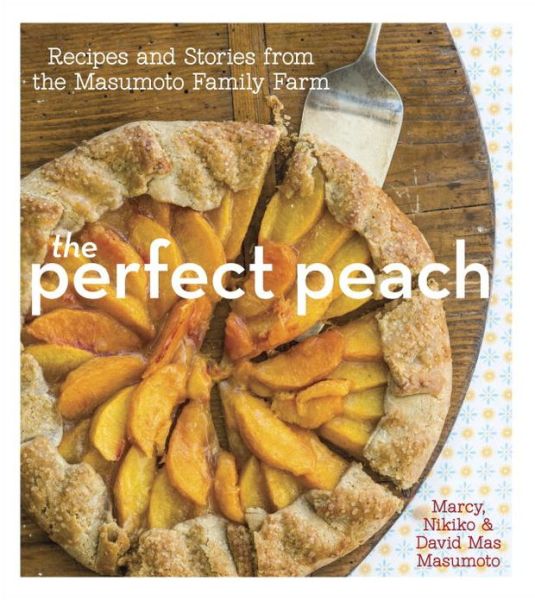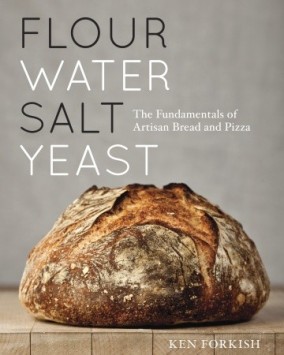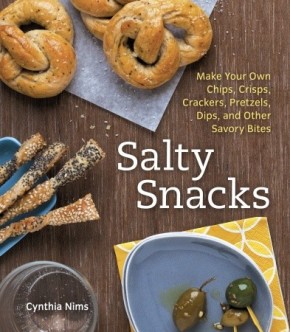The Perfect PeachRecipes and Stories from the Masumoto Family Farm
Foreword by Rick Bayless
A cookbook showcasing the luscious flavor of peaches in 50 sweet and savory dishes, drawing on the life stories and experiences of America’s foremost peach farming family, the Masumotos of California’s central valley.
Enjoy the luscious versatility of summer’s finest fruit with fifty sweet and savory dishes.
The Masumoto family’s amazing heirloom peaches—which are available for a few weeks each year at the best produce markets and top restaurants in the country—are widely considered the best peaches in the world. Their debut cookbook gathers the family’s favorite recipes, from classics like Hearty Peach Cobbler, Peach Chutney, and Slow-Cooked Pork Tacos to inspired combinations such as Prosciutto-Wrapped Peaches, Caprese with Peaches, Spice-Rubbed Pork Chops and Grilled Peaches, and Stuffed French Toast. And the pristine flavor of a just-picked summer peach can be enjoyed year-round with the easy-to-follow instructions for drying, canning, freezing, or jamming the best of the harvest.
With rich recipe and location photographs fresh from the orchard, this beautiful cookbook paints an intricate portrait of an organic farm that has been in the family for four generations. Accompanied by eloquent essays that evoke the soul of family farming and the nuances of a life filled with peaches, The Perfect Peach is for anyone who longs to savor the flavor of a pristinely ripe peach.
“This is a very special book, not just because it’s about peaches and the surprising things you can do with them, but because it’s also about growing peaches, the farming life, and, most uniquely, because it’s composed by a family. While reading The Perfect Peach, I couldn’t help but wish that every fruit and vegetable had champions like the Masumoto family, for surely each one deserves it. I look forward to that day.”
—Deborah Madison, author of Vegetable Literacy and Vegetarian Cooking for Everyone
“I have one word for the writing, photography, essays, and topic of this book: luscious. The Masumoto family has produced a glorious paean to the fruit they raise along with delightful ideas about what to do with an abundance of this heavenly fruit: sangria, salsa, pizza, and, of course, shortcake. I can’t wait for summer.”
—Marion Nestle, Professor of Nutrition, Food Studies, and Public Health at New York University and author of What to Eat
“Congratulations to Mas and family for putting together a long overdue tribute to the delicious peach! I can’t wait to test out the tantalizing recipes in their wonderful new book.”
—Ag Kawamura, farmer and former California Secretary of Agriculture
“From Shaking Beef with Peaches to Peach Lemongrass Granita, The Perfect Peach collects an abundance of compelling recipes. But as a native son of Georgia who worked his first summer job at a peach packing plant, what really appealed to me were the Masumuto family tributes to all things sweet and fuzzy, and the interstitial essays that supply the real locomotion for this book of cookery advice and agricultural rumination.”
—John T. Edge, coeditor, The Southern Foodways Alliance Community Cookbook
Peach Bruschetta | Old-Fashioned Peach Pie
Peach Bruschetta
serves 4 to 6
arugula pesto
1 clove garlic
1/4 cup walnuts
1/4 cup extra-virgin olive oil
11/2 cups arugula
Salt and freshly ground pepper
1 tablespoon olive oil, plus more for brushing the bread
1 red onion, thinly sliced
1 teaspoon minced fresh rosemary
1 baguette, sliced 3/8 inch thick
1 to 2 cloves garlic, smashed
2 soft small peaches, peeled, halved, pitted, and cut into wedges 1/4 inch thick
Shaved Parmesan cheese, for garnish
Coarse salt
To make the pesto, combine the garlic and walnuts in a small food processor and pulse until finely chopped. Add the oil and arugula and continue to pulse until the mixture is evenly moist and spreadable. Season to taste with salt and pepper.
To make the bruschetta, heat the oil in large skillet over medium heat. Add the onion and rosemary. Cook for 20 minutes, stirring often, until the onion is soft. Set aside.
Meanwhile, prepare a medium-hot fire in a gas or charcoal grill. When the fire is ready, paint each bread slice on both sides with oil. Arrange the bread on the grill rack and toast, turning once, for about 2 minutes on each side, until golden brown. (If you do not have a grill, toast the bread on both sides in a preheated broiler until golden brown.)
When the bread slices are ready, let them cool enough to handle, then rub the smashed garlic cloves on both sides of each slice. Spread about 1 teaspoon of the pesto on one side of each bread slice. (You will need only 1/2 cup pesto; cover and store any remaining pesto in the refrigerator for another use.) Top each slice with some of the caramelized onion, 1 or 2 peach slices, a little Parmesan, and a sprinkle of salt. Serve warm or at room temperature.
Old-Fashioned Peach Pie
makes one 9-inch double-crust pie; serves 6 to 8
Peach pie is the first thing that comes to my mind when people ask me what my favorite peach dessert is. I think that’s because I grew up in a pie-baking family. I really like to pile in the peaches and minimize the added sugar in the filling to attempt to improve the nutritive value of the pie. But in the end, I have come to realize that if you’re going to eat pie, you shouldn’t worry about its nutritional heft. Instead, just enjoy the pie!
My mom always used lard to make piecrust, never shortening, oil, or butter. That was back when I was a kid and we had homemade lard from the milk-fed pigs we raised and butchered for the family each year. I like the flavor of lard, but because I don’t have access to homemade lard nowadays, I use a combination of butter and shortening. This recipe is for pastry for double-crust pie, but it can also be used for two 9-inch single crust pies. Just divide the dough ball in half, roll out the dough, line the pie pan, and trim the overhang as directed, then fold the overhang under to create a high edge on the pan rim and flute the edge attractively.
The tricky thing about peach pie is adjusting the amount of thickener (flour or tapioca) in relation to the juiciness of your peaches. Because our peaches are extremely juicy, which is how they are supposed to be, I always put aluminum foil or a pan on the rack below my pie to catch juices that might escape during baking. That saves a lot of time cleaning the oven! If you have extra-juicy peaches, you may want to do a lattice-top crust or cut larger holes in the top crust to allow more steam to vent. If your pie does not cool completely or has not baked long enough, the filling will be runny, so make sure you leave it in the oven long enough and let it cool fully to room temperature before cutting into it!
If you are using a deep-dish pie pan, use 7 to 8 cups sliced peaches and increase the sugar and flour or tapioca accordingly. — Marcy
pastry
3 cups unbleached all-purpose flour
1 tablespoon sugar
11/2 teaspoons salt
1/2 cup cold unsalted butter, cut into 1/2-inch cubes
1/2 cup vegetable shortening (not margarine), chilled
6 to 7 tablespoons ice water
In a large bowl, stir together the flour, sugar, and salt, mixing well. Distribute the butter and shortening over the flour mixture. Using a pastry blender, work in the butter until it is the size of small peas. Add the water, 1 tablespoon at a time, and work it into the flour mixture with your hands until it is moist enough to hold together and you can shape it into a ball. Do not overwork the dough or the pastry will be tough. (Alternatively, combine the flour, sugar, and salt in a food processor and pulse to mix well. Distribute the butter and shortening over the flour mixture and pulse until the fat is the size of small peas. Add the water, 1 tablespoon at a time, and pulse until the mixture comes together in a rough mass. Remove the dough from the processor and shape into a ball.)
Divide the dough into 2 balls, one slightly larger than the other. Flatten each ball into a disk 1 to 11/2 inches thick. Wrap each disk in plastic wrap and refrigerate the disks for at least 1 hour or up to 2 days.
When you are ready to assemble the pie, dust your work surface with flour. Unwrap the larger disk, place on the floured surface, and roll out into a round at least 13 inches in diameter and 1/8 inch thick. Transfer the round to a 9-inch pie pan, gently fitting it into the bottom and sides. Trim the edge of the pastry to leave a 1-inch overhang around the rim of the pan.
Preheat the oven to 400F.
Place the peaches in a large bowl. Drizzle them with the lemon juice and stir gently to coat evenly.
If your peaches are especially juicy, drain off the excess juice and reserve for drinking later or even while you make the pie and use the larger amount of flour. In a small bowl, stir together the granulated sugar, flour, cinnamon, and salt. Sprinkle the sugar mixture over the fruit and toss gently to coat the peaches evenly. Set the peaches aside.
Pour the filling into the pastry-lined pie pan. Distribute the cubes of butter evenly over the filling. Roll out the second pastry disk the same way into a round at least 11 inches in diameter and 1/8 inch thick. Gently lay the round over the filled pastry, then trim the edge to match the overhang of the bottom layer. Fold the overhang either over itself or under itself to create an edge, sealing the edge securely and fluting it for an attractive appearance.
Brush the top crust with the cream, then sprinkle it with the turbinado sugar. Cut at least 6 large slits in the top crust to allow the steam to vent during baking. Cover the edges with foil or a crust protector if needed to prevent overbrowning.
Line a baking sheet with aluminum foil and place the pan on the lower rack of the oven to catch drips as the pie bakes. Place the pie on the center rack above the pan and bake for 50 to 60 minutes. Check the crust after 40 minutes. If the edges are not the same color as the exposed top of the crust, remove the edge cover. When the filling is bubbling and the crust is evenly browned, the pie is ready.
Let the pie cool completely (this will take at least 2 to 3 hours) on a wire rack before serving, then cut into wedges to serve.
Cook’s Note: Put any rolled-out pastry trimmings on a baking sheet and sprinkle with sugar and cinnamon. Bake in a preheated 400F oven for 10 to 15 minutes, until golden brown. Enjoy with a glass of cold milk for some down-home comfort food!
Reprinted with permission from The Perfect Peach by Marcy, Nikiko, and David Mas Masumoto, copyright © 2013. Published by Ten Speed Press, a division of Random House, Inc. Photo © 2013 Staci Valentine.













Leave a Reply